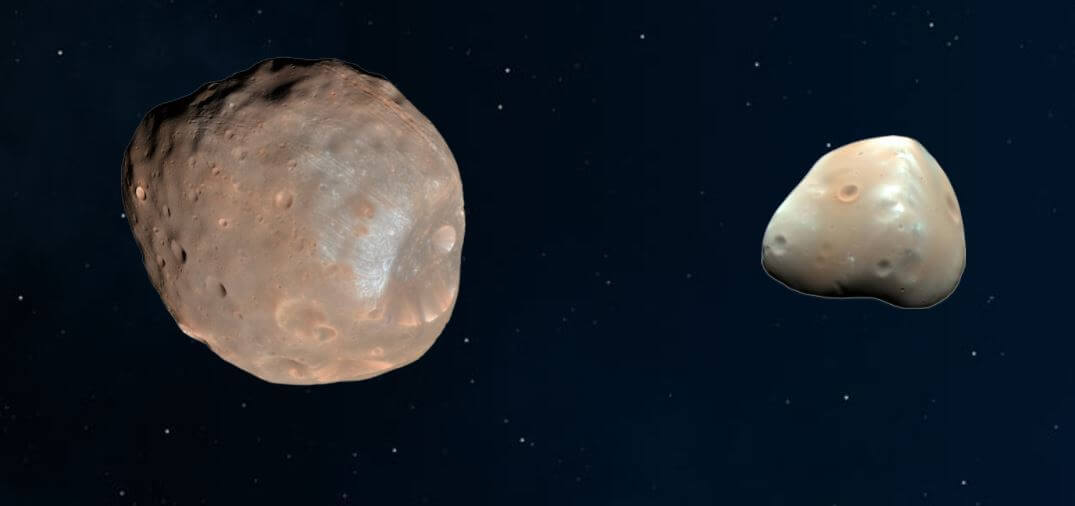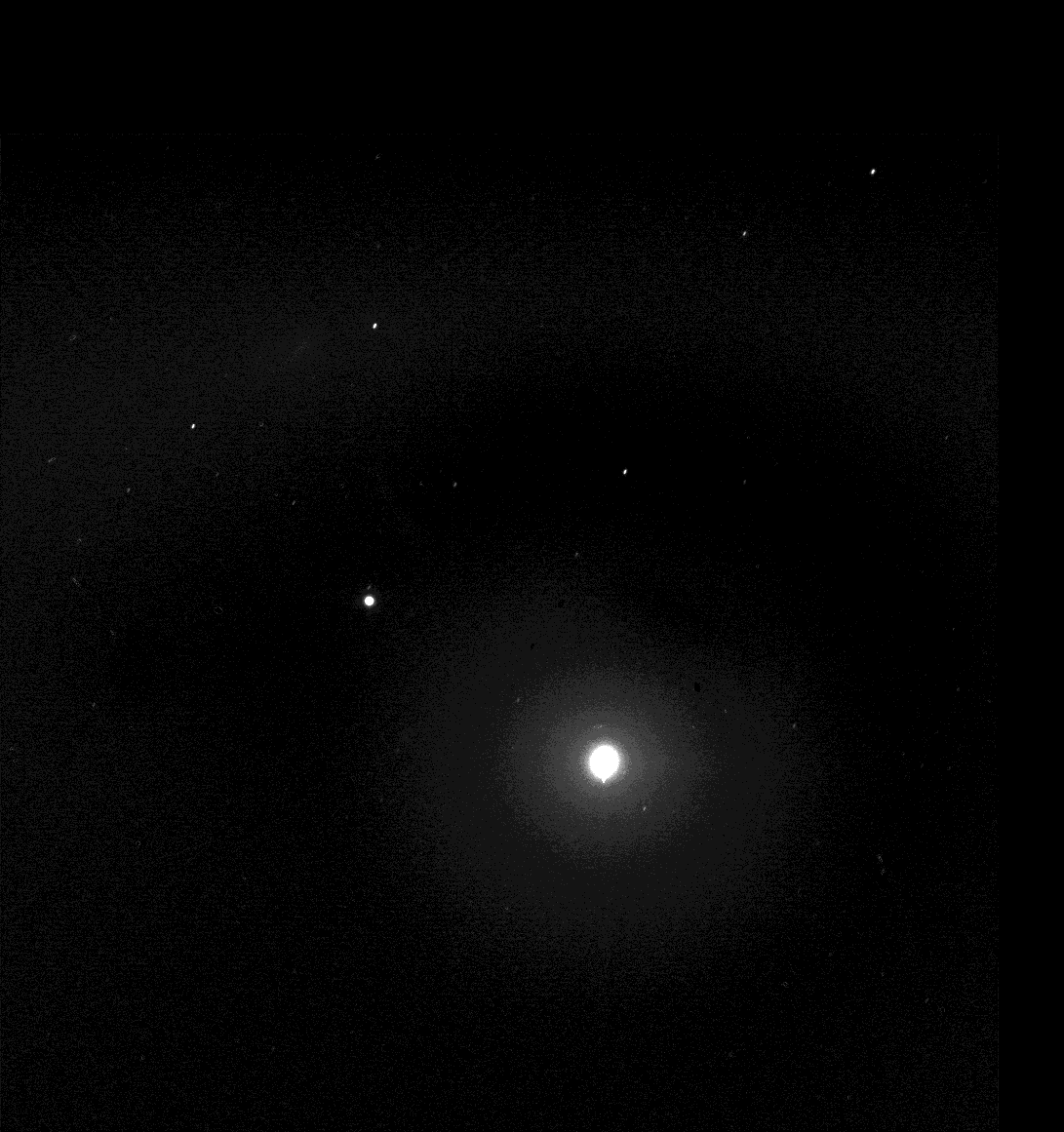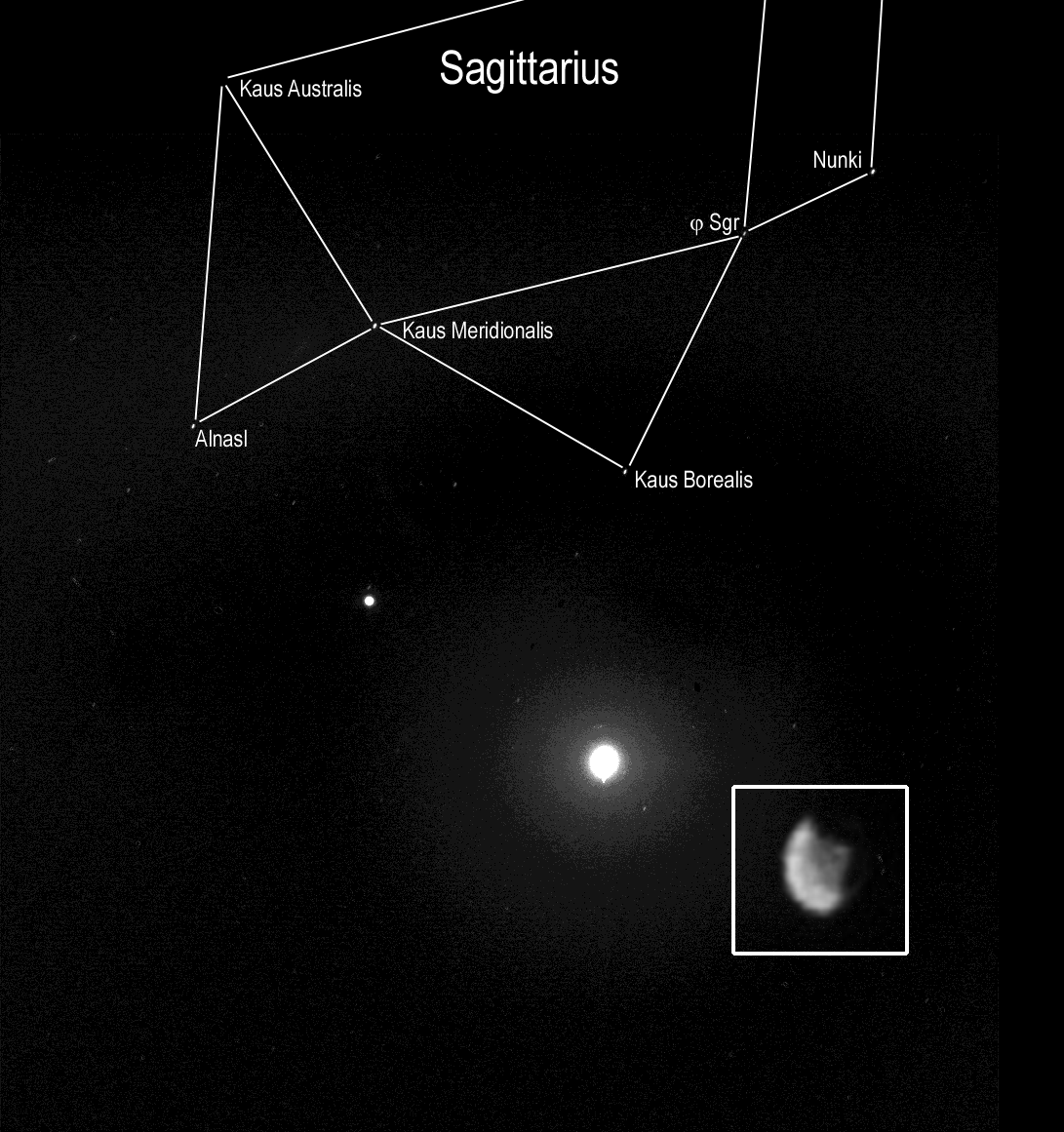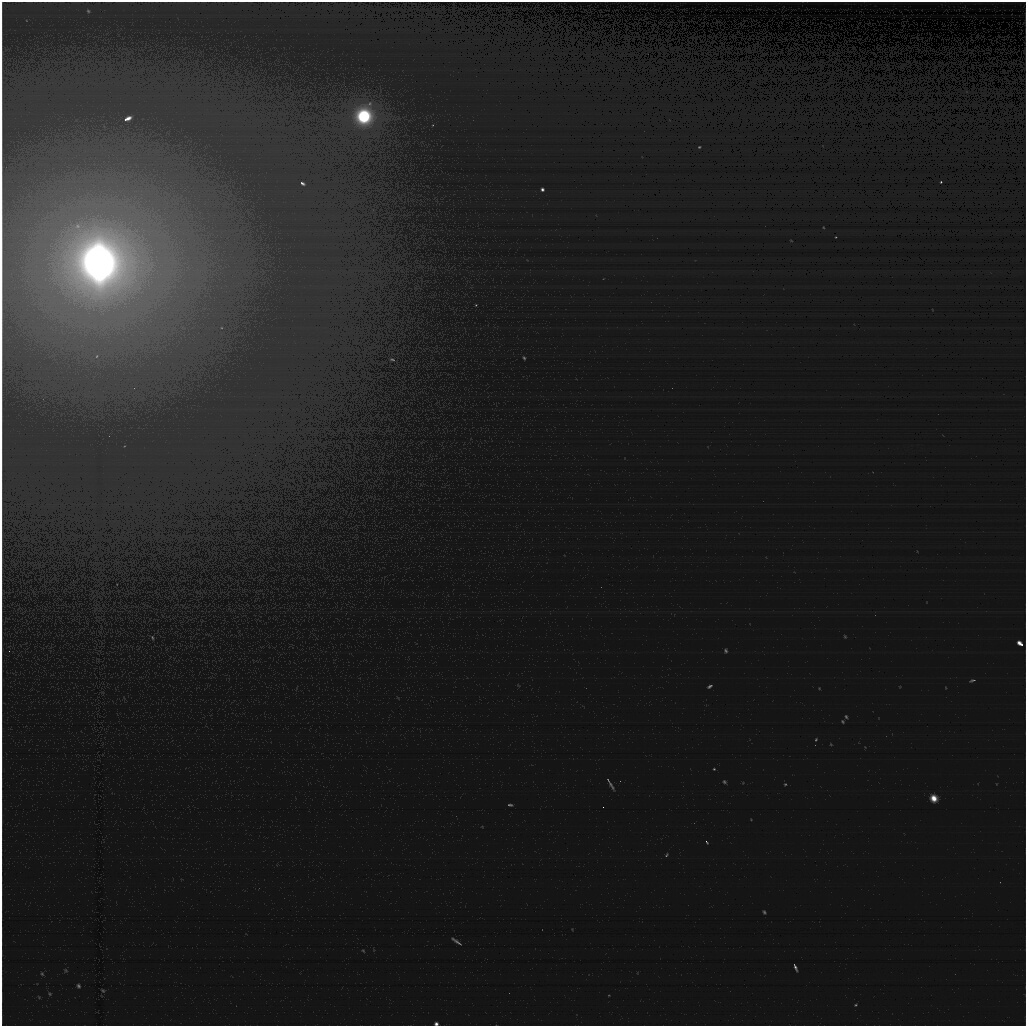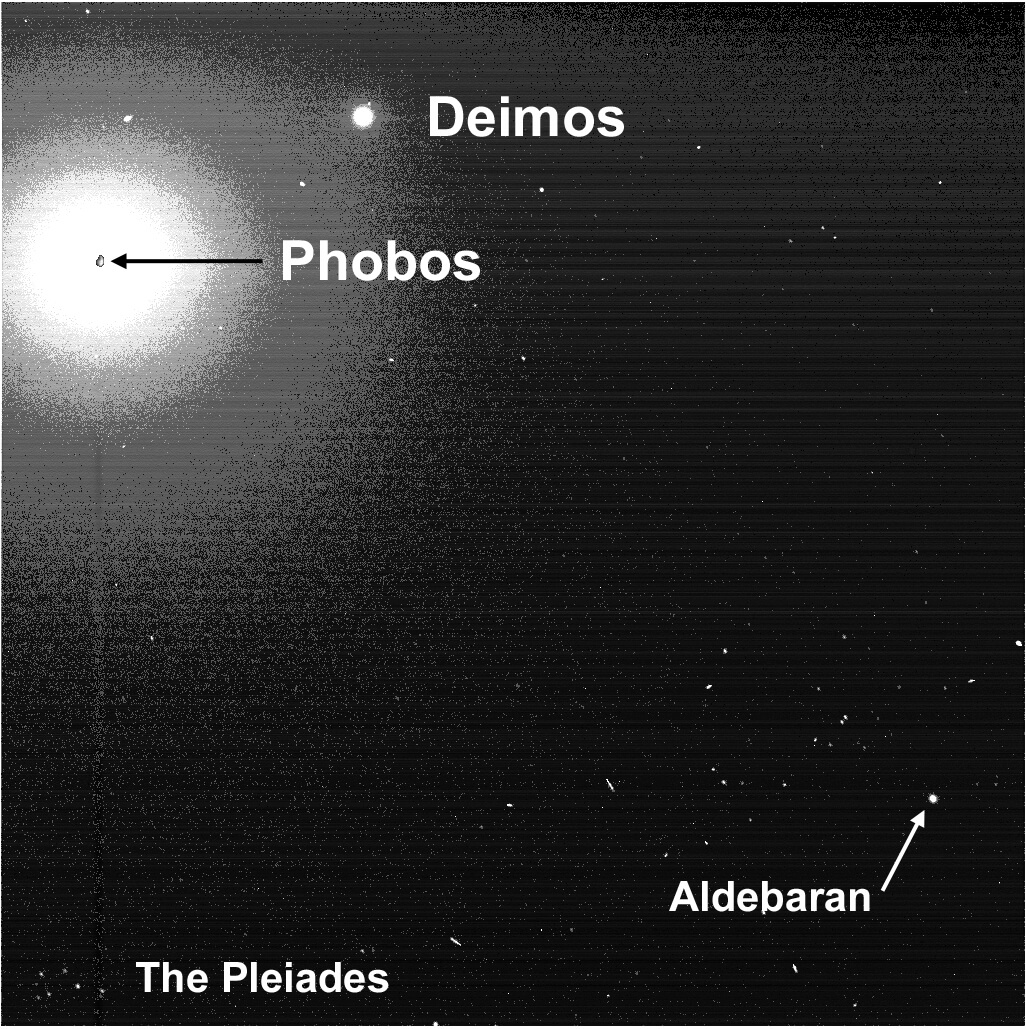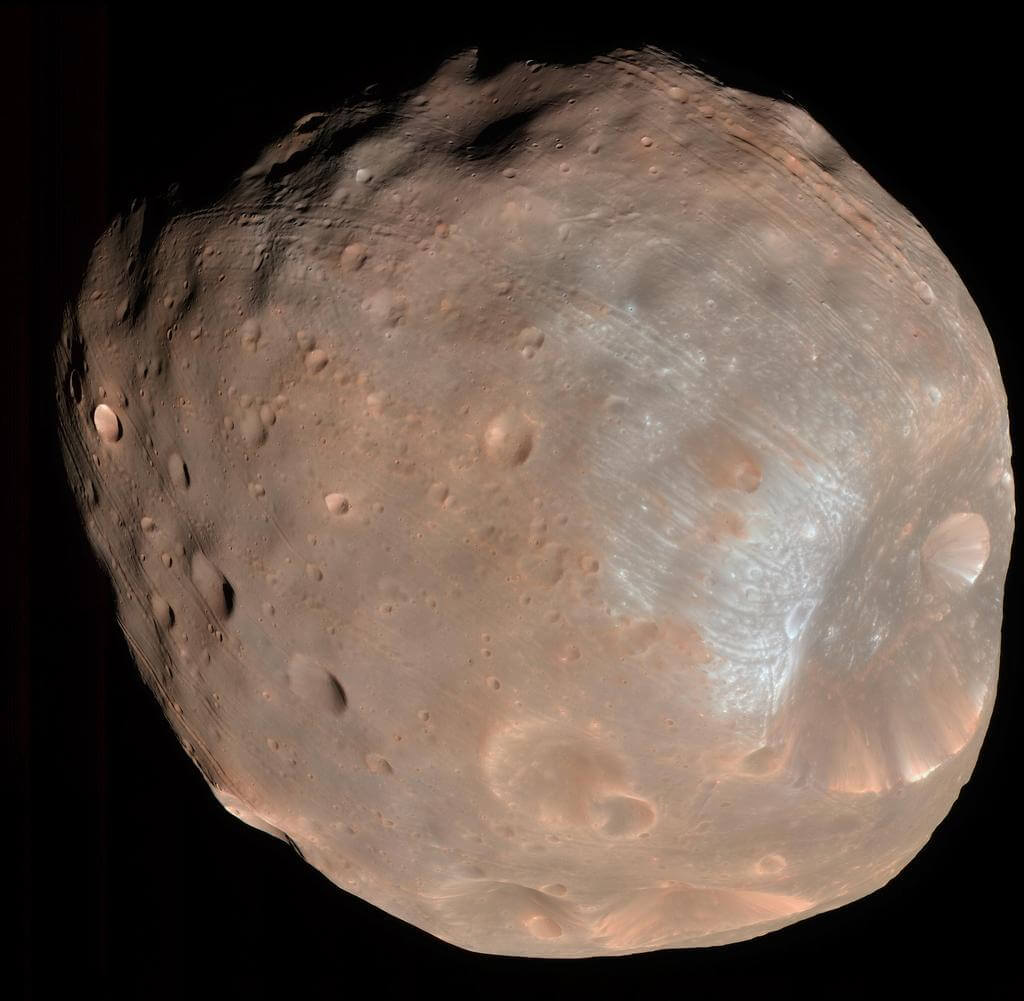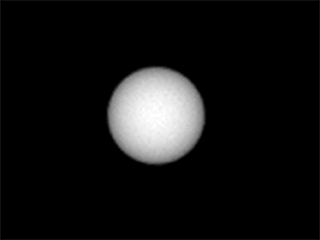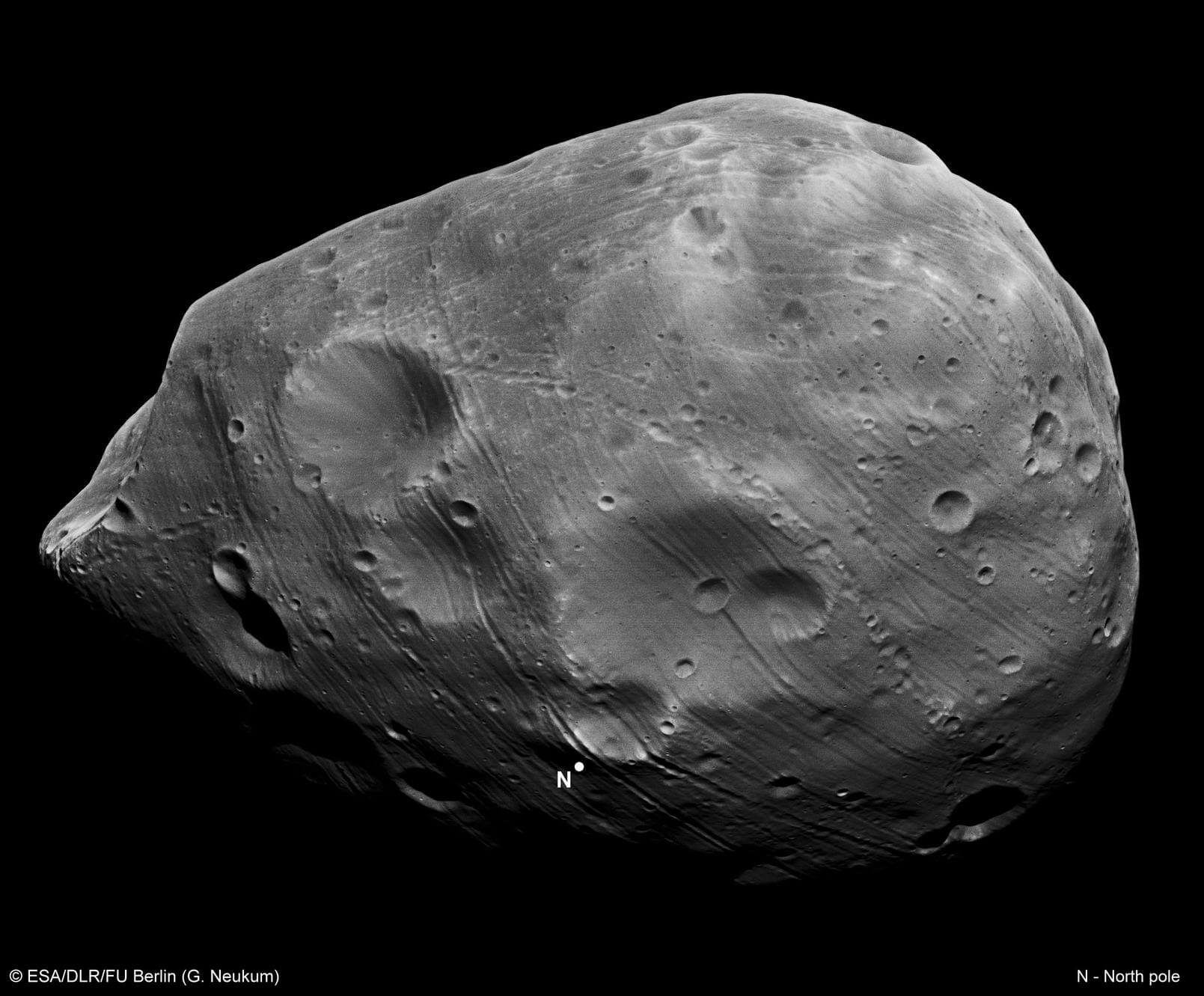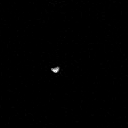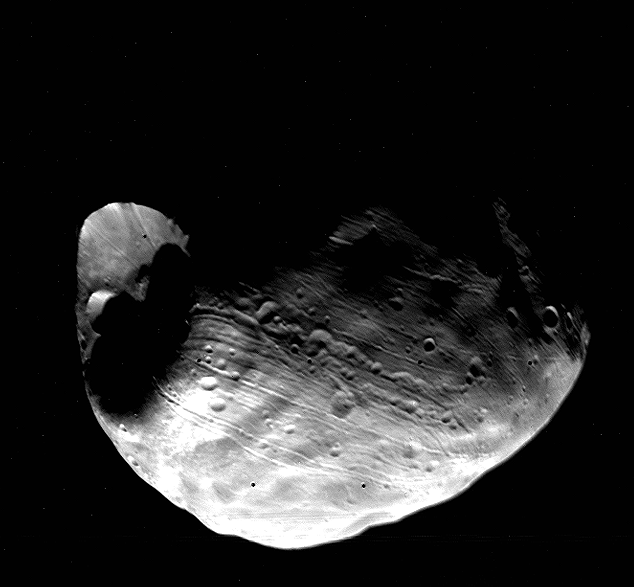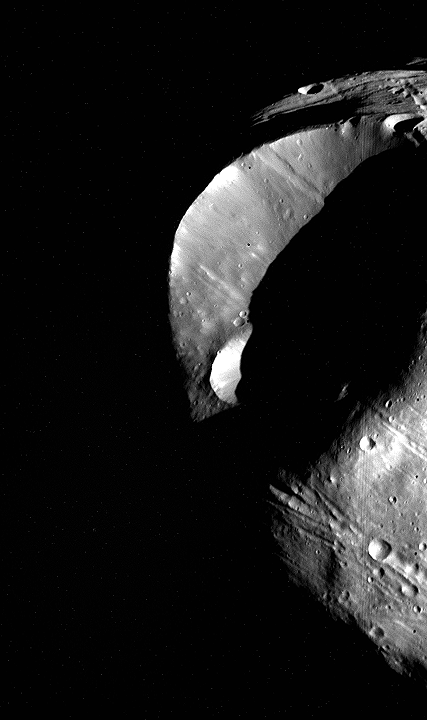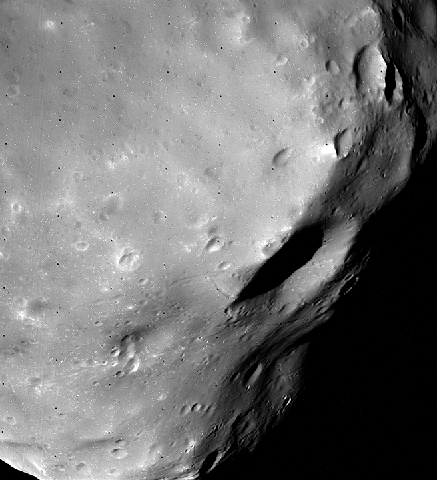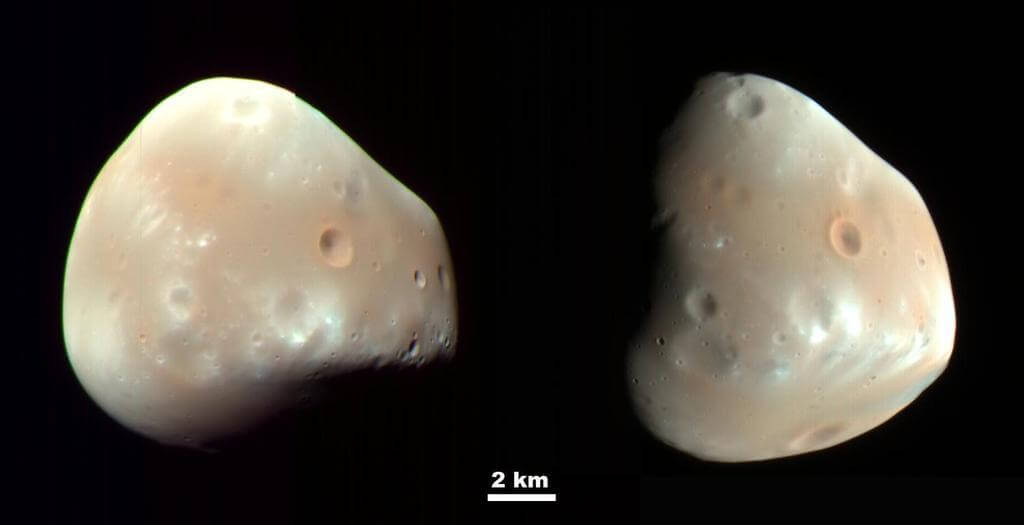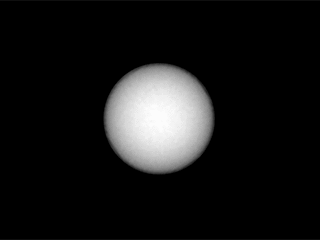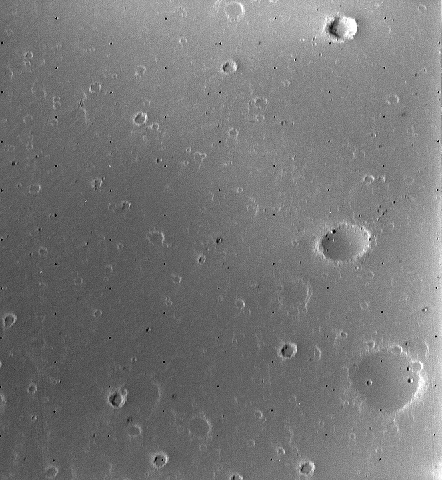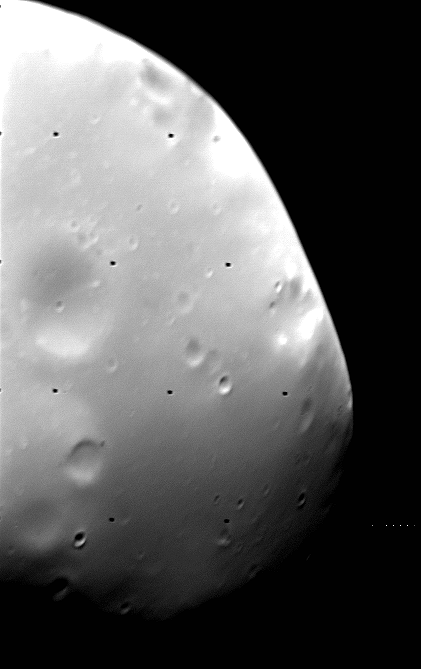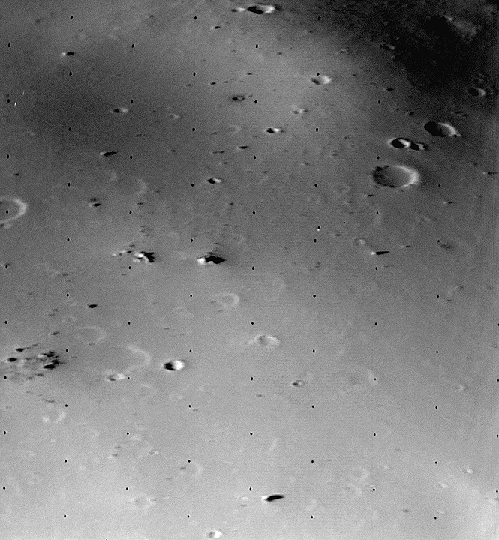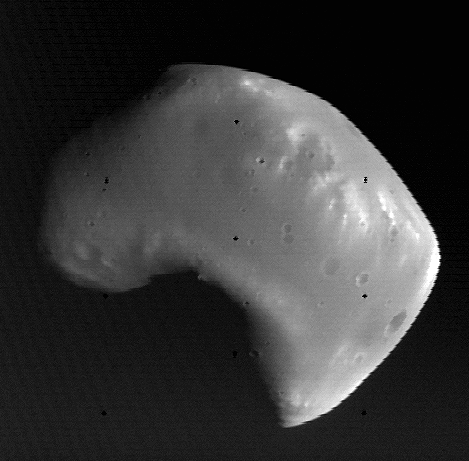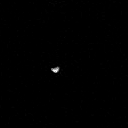1st Animation of Two Moons Passing in the Night
This animation shows Phobos as a large white dot against a black background, representing Phobos, moving from the lower center toward the upward right corner. Above and to the left of it is Deimos, a smaller white dot, that also moves upward and to the right but at a much slower pace. In fact, Phobos starts out below Deimos, the smaller dot, and quickly moves past it in the sequence.
2nd Animation of Two Moons Passing in the Night
This animation shows a large white dot against a black background, representing Phobos, moving from the lower center toward the upward right corner. Above and to the left of it is a smaller white dot, representing Deimos, that also moves upward and to the right but at a much slower pace.
1st Image of Two Moons and the Pleiades from Mars
This image shows on the upper right side, is a small white circle against a black background representing Phobos, with a smaller black circle representing Deimos a little above and to the right of it.
2nd Image of Two Moons and the Pleiades from Mars
This image shows a large white circle representing an enhanced image of the light from Phobos with an oblong rock-like object representing Phobos itself inserted in the middle. A little above and to the right of that is a smaller white circle representing Deimos. In the lower left corner are several white pinpoints labeled 'The Pleiades.'
